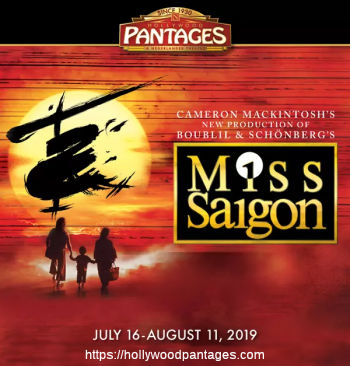
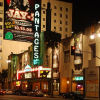 Our post-Hollywood Fringe Festival (FB) theatrical break has ended (last weekend, which I didn’t write about, was the quasi-theatrical concert of An Intimate Evening with Kristen Chenowith at,The Hollywood Bowl (FB)). Saturday night we were at the Hollywood Pantages (FB) for Miss Saigon (FB). It is a show for which I’ve known the music for years and years, but had never seen.
Our post-Hollywood Fringe Festival (FB) theatrical break has ended (last weekend, which I didn’t write about, was the quasi-theatrical concert of An Intimate Evening with Kristen Chenowith at,The Hollywood Bowl (FB)). Saturday night we were at the Hollywood Pantages (FB) for Miss Saigon (FB). It is a show for which I’ve known the music for years and years, but had never seen.
Now that I’ve seen it — so many mixed emotions. I’m glad to have seen it, and to finally have an understanding of the story behind the music. But I have no strong desire to see it again; in fact, this is a show that requires a lot of context setting and discussion to make it fit well in the modern world. This tour is not doing it; IIRC, it has chosen not to do it. Most audiences will see this show, take it on surface values for the beautiful music and performances, and not understand the real story and problems behind it. There are some attempts to bring important issues to the fore, but they seem tacked on afterthoughts for the story.
Let’s start where all performances must start: the story. In this case, an uncredited adaptation of the themes of Madame Butterfly by Giacomo Puccini made by Alain Boublil French Lyrics and Claude-Michel Schönberg Music, with further adaptation by Richard Maltby Jr, and Alain Boublil English Lyrics, Michael Mahler Additional Lyrics, and the production expertise of Cameron Mackintosh. Madame Butterfly, if you are unfamiliar, tells the story of an American Naval Officer in 1904 who goes to Japan, falls in love with a Geisha (“Butterfly”), and then leaves. Butterfly finds herself pregnant. Three years later he returns, married. The wife has agreed to raise the child, but when she sees how devoted Butterfly is to the child, she decides she can’t take the child away. Butterfly insists that the officer come tell her himself. When he does, she prepares her child to live with his father, and commits suicide behind a screen.
One important to note at this point: We’re talking a story about Japanese culture, written by a white Italian, based on a semi-autobiographical novel by a white French man, that has traditionally been performed by non-Asian opera singers. What could possibly go wrong as it is adapted for modern times?
Boublil and Schönberg updated the setting of the story, transforming it to the time of the fall of Saigon. This time, an American GI, Chris, falls in love with a girl from a local village, Kim, who just started to work at a girl-bar for “The Engineer”. The two get married per Buddhist custom. During the marriage ceremony, the cousin to whom she was promised, Thuy, shows up — a North Vietnamese officer — and curses her. Saigon falls, and Chris is on the last chopper out of the embassy, unable to get Kim out. Cut to three years later. Thuy has found The Engineer in a reeducation camp up North, and persuades him to find Kim for him. He does, but Kim does not want to marry the officer. When pressed, she reveals she has a son who is half-American. Thuy threatens to kill the boy, but Kim shoots and kills Thuy to save her son. The Engineer, on the other hand, sees the boy as the ticket out of Vietnam, and pretends to be Kim’s brother and they escape to Bangkok. Back in the states, after a year or so, Chris remarries to Ellen, who knows nothing of Chris’ past. John, Chris’s buddy from Vietnam, contacts him to let him know Kim has been found, and there is a child. All three go to Bangkok to meet Kim. But before the planned meeting, the Engineer lets Kim know where Chris is. She goes there, only to meet Ellen. Ellen had been willing to bring the boy back, but seeing Kim’s attachment decides they instead will support Kim and the boy, Tam. Kim insists that Chris tell that to him face-to-face. Chris, John, and Ellen head down to Kim’s room to do so. As they do, Kim tells Tam that he’ll be going with his father to a better life. She goes behind a curtain and shoots herself. Tearful last scene with Chris.
Of course, this is a linear presentation of the story; the stage version keeps going back and forth in time.
When this first opened, there was controversy aplenty when Mackintosh cast a white actor, Johnathan Pryce, as the Engineer, and another white actor as Thuy. He also cast Lea Salonga as Kim. He petitioned Equity to bring these three to America (and won), but not after lots of protests. Times have changed, and at least we have Asian actors in those roles. These are usually Filipino, not Vietnamese, however.
So where to start, story-wise. The basic story, stripped of all the cultural trappings, is both classic opera and classic colonialism, taking advantage of those in a culture felt to be inferior. It it was to be set entirely in a European culture, would it be an acceptable story? Probably not, other than as melodrama. But both the original and the Miss Saigon version use the story to present a colonial view of Asian culture, and that’s wrong. White guys writing about Asian culture. What could go wrong?
When you look at the Asians in the story, only one comes off as noble and good: Kim. The rest are either pimps (The Engineer), whores (the bar girls), or Communist Baddies (North Vietnamese soldiers). Further, their portrayal is excessively offensive — especially in the bar scenes. Women are treated as property, sexual toys, vessels for men to take advantage of and use. Setting aside ethnicity for a moment, this is an extremely offensive portray of the treatment of women. This is not to say that it didn’t happen in the mid-1970s in Saigon and Bangkok, but it is so different from modern sensibilities that context is required. None was provided. So we have an offensive stereotypical portrayal of Asians, and Asian “sex dens”, and of violence towards women in that culture and time. What more could go wrong?
This brings us to “The Engineer”: A character designed to be a pimp and a conniver and a schemer, a man who will do anything and everything he can to survive and make money for himself, and achieve the stereotypical American dream. He made me think quite a bit of Donald Trump, except the Engineer is a wrung above Trump, as the Engineer is at least aware of what and who he is, and what he does to get there. Trump is. But the Engineer is one of those offensive anti-heroes (and it is no surprise that Pryce went on to play Fagin in a revival of Oliver! a few years later — the two are very similar stereotypical characters).
As for the Americans, they are portrayed as honorable types who could do no wrong. They are only virtuous, wanting to do what is best. This, again, is a stereotypical portrayal hyping the image of the great white God.
If there is anything redeeming in the story, it is perhaps bringing attention to the children left behind after war. But even then the show does not make an effort to inform the audience of how to help these children. The stories are real, as described by the New York Times and Chicago Tribune. And there are real foundations helping these children, including the Pearl Buck Foundation. But are they mentioned in the show or in the Playbill? No.
So the story itself not only presents a tragedy on-stage, but contains a multitude of additional tragedies. It could be a beneficial starting point to oh so many discussions. But that opportunity is not taken, and so we are left with a white-man’s view of a tragic love story, designed to pull emotion out of audiences.
If the story is problematic, why does Miss Saigon keep succeeding for over 25 years. The answer is threefold: music, performance, and stagecraft.
- In terms of Music: Boublil and Schönberg (and Maltby)’s music and lyrics are beautiful. Some of the songs, such as “The Last Night of the World”, “Bui Doi”, or the Act I closer, “I’d Give My Life For You”, have become ballad standards. Other songs, such as “The Heat Is On”, “If You Want to Die in Bed”, or “The American Dream” are just energetic earworms. This is a score that is just nice to listen to, crafted well.
- The performances tend to be strong. The Engineer, while sleaze on stage, is fun to watch. Kim has soaring vocals. John gets a lovely turn in Bui Doi. And Chris’ duets with Kims are lovely.
- The stagecraft seals the deal. From the Vietnamese soldiers dancing acrobatically during the “Morning of the Dragon”, to the sex shops of Saigon and Bangkok, to the spectacular landing of a helicopter on stage in Act II: the audience applauds the art.
So let’s explore those performances, which were under the direction of Laurence Conner, with musical staging and choreography by Bob Avian, and additional choreography by Geoffrey Garratt (FB), helped by Seth Sklar-Heyn (FB) Assoc. Director, Jesse Robb (FB) Assoc. Choreographer, Ryan Emmons (FB) Resident Director, Brandon Block (FB) Dance Captain, and Anna-Lee Wright (⭐FB, FB) Asst. Dance Captain.
In the “lead” position was Red Concepción (⭐FB, FB) as The Engineer (👨🎤) (Eymard Cabling (FB) at select performances). Concepción’s Engineer was very different than what I surmise Pryce’s must have been. Concepción played the character with an incredibly slimy and disgusting vibe, which was perfect for the character. He did a great job on songs such as “The Heat is On” “If You Want to Die in Bed”, “What a Waste”, and especially “The American Dream”. He was only hindered by the horrible acoustics of the Pantages, which delight in muffling sound — and which require actors to sing very clearly and with the right sound balance. But his characterization was spot on.
As Kim (👩), Emily Bautista (FB) (Myra Molloy (⭐FB, FB) at select performances) was stunning. She had a beautiful voice, and captured the initial shyness — and later the determination — of the character quite well. A joy to watch.
Her love interest, Chris (👨), was played by Anthony Festa (FB). Festa had a nice “everyman GI” look to him. He wasn’t overly hunky or buff, but a believable everyguy who was drafted into a war he didn’t want to be in. He sang well, and had a nice chemistry with Baustista’s Kim. As his buddy John (👦🏿), J. Daughtry (FB) did an outstanding job, especially with his Act II opening number, “Bui Doi”.
Turning to the remaining second tier roles: Jinwoo Jung (FB) Thuy (👧), Barman and Stacie Bono (FB) Ellen (👱♀️). Jung brought a strong presence and a strong voice to Thuy, the spurned suitor/cousin, and a great ghost in the second act. Bono’s Ellen exists more in the background, although she does get a nice number in the second act with Kim.
Of the last somewhat main characters, there is Kim’s son, Tam (Adalynn Ng at our performance, alternating with Tyler Dunn, Haven Je, and Fin Moulding). This character is … a human prop. “He” (because some actors are female) gets to be on stage, hug his mother, be carried by other characters, and occasionally, be thrown around and manhandled by other characters. He has no lines. At the curtain call, he comes out and looks cute, and gets applause for surviving. The actors do the best they can for the limited role, and for their age, but I feel sorry them in that they don’t really have more of an opportunity to show their skills off.
This brings us to the rest of the company, who play many different roles over the show. Of these, most notable are Dragon Acrobats (Noah Gouldsmith (FB), McKinley Knuckle (FB), and Kevin Murakami (FB)) who were outstanding. The company consisted of (additional named roles as shown; named understudy positions indicated with superscripts): Christine Bunuan (⭐FB, FB) Gigi (👩🦱), Patpong Street Worker; Eymard Cabling (FB) The Engineer (👨🎤)-Alt, Vietnamese Army Soldier, 👧u/s; Myra Molloy (⭐FB, FB) Kim (👩)-Alt; Devin Archer Marine, 👨u/s; Alexander Aguilar Marine; Eric Badiqué (FB) Vietnamese Army Soldier, Moulin Rouge Club Owner, 👨🎤u/s; Kai An Chee (FB) Bar Girl, 👩u/s, 👩🦱u/s; Julie Eicher (FB) Bar Girl, 👱♀️u/s; Matthew Dailey (FB) Marine, Shultz; Noah Gouldsmith (FB) Marine, Acrobat; Adam Kaokept (FB) Vietnamese Army Soldier; David Kaverman (FB) Marine, 👦🏿u/s; McKinley Knuckle (FB) Marine, Acrobat; Madoka Koguchi (FB) Dominique, Moulin Rouge Club Dancer; Garrick Macatangay (FB) Vietnamese Army Soldier, Patpong Street Worker; Jonelle Margallo (FB) Mimi, Patpong Street Worker, 👱♀️u/s, 👩🦱u/s; Kevin Murakami (FB) Acrobat; Jackie Nguyen (FB) Yvette, Moulin Rouge Club Dancer; Matthew Overberg (FB) Vietnamese Army Soldier; Emilio Ramos (FB) Marine, Vietnamese Army Soldier; Adam Roberts (FB) Marine, 👨u/s; Michael Russell (FB) Marine; Julius Sermonia (⭐FB, FB) Asst. Commissar, 👧u/s; Emily Stillings (FB) Bar Girl, Patpong Street Worker; Tiffany Toh (FB) Fifi, Patpong Street Worker; Nicholas Walters (FB) 👦🏿u/s; and Anna-Lee Wright (⭐FB, FB) Yvonne, Patpong Street Worker. U/S Key: 👨🎤 Engineer; 👩 Kim; 👨 Chris; 👦🏿 John; 👱♀️ Ellen; 👧 Thuy; 👩🦱 Gigi.
Swings were: Brandon Block (FB), Joven Calloway (FB), Rae Leigh Case, Nancy Lam (FB), Brian Shimasaki Liebson (FB).
This brings us to the music side of the art: the orchestra, conducted by Will Curry (FB) Music Director, assisted by Adam Rothenberg (FB) Assoc. Conductor. The orchestra had a very nice sound, and consisted of the following artists (🌴 indicates local): Zoe Miller (FB) Concertmaster; Erik Rynearson 🌴 Viola; David Mergen (FB) 🌴 Cello; Mike Epperhart (FB) Bass; Mira Magrill (FB) Flute / Piccolo / Asian Flutes; Michele Forrest 🌴 Oboe / English Horn; Richard Mitchell 🌴 Clarinet / Alto Sax / Flute; John Fumo (FB) 🌴 Trumpet; Charlie Morillas (FB) 🌴 Trombone / Bass Trombone; Jenny Kim 🌴, Katie Farudo French Horns; Russ Nyberg (FB) Drums / Percussion; Adam Rothenberg (FB), Jordan Jones-Reese Keyboards; Mary Ekler (⭐FB) 🌴 Keyboard Sub. Other music credits: Stephen Brooker Music Supervision; James Moore (FB) Tour Musical Supervisor; Eric Heinly (FB) 🌴 Orchestra Contractor; John Miller (FB) Music Coordinator; William David Brohn Original Orchestrations; Stephen Metcalfe (FB) & Seann Alderkng Original Orchestration Adaptations.
This brings us to the stagecraft and creative side of the story. Based on a design concept by Adrian Vaux, Totie Driver and Matt Kinley‘s Set Design is remarkable, especially for a touring production. They have done a very effective job of creating the hustle and seedy underbelly of Saigon and Bangkok, and the gigantic Ho head is quite menacing. They also create a great helicopter illusion. My only complaints are more Bruno Poet‘s lighting design (which continues the Cameron Mackintosh tradition of being far too dark and dim) and Mick Potter‘s sound design, which is far too muffled for the Pantages. It take work to get clear and crisp sound in the Pantages, and there are some that get it right when they load in. These folks didn’t, and on the sides, you couldn’t always clearly hear or make out the words. Andreane Neofitou‘s costumes seemed appropriate, although I cant’ speak to their authenticity. Luke Halls‘s projections were effective. Remaining production credits: Tara Rubin Casting Casting; Jack Stephens Company Manager; Justin T. Scholl Assoc. Company Manager; Jovon E. Shuck Production Stage Manager; Michelle Dunn Stage Manager; Stephanie Halbedel Asst. Stage Manager; Rachael Wilkin Asst Stage Manager; Broadway Booking Office NYC Tour Booking.
Miss Saigon continues at the Hollywood Pantages (FB) through August 11. If you like the Les Miz style of Boublil and Schonberg, you’ll enjoy this. The performances and stagecraft are great. But don’t think too much about cultural problems behind the story, because that might make you think twice about attending. Me? I’m glad to have seen it this once, but I don’t have the desire to see it again.
🎭
Ob. Disclaimer: I am not a trained theatre (or music) critic; I am, however, a regular theatre and music audience member. I’ve been attending live theatre and concerts in Los Angeles since 1972; I’ve been writing up my thoughts on theatre (and the shows I see) since 2004. I do not have theatre training (I’m a computer security specialist), but have learned a lot about theatre over my many years of attending theatre and talking to talented professionals. I pay for all my tickets unless otherwise noted (or I’ll make a donation to the theatre, in lieu of payment). I am not compensated by anyone for doing these writeups in any way, shape, or form. I currently subscribe at 5 Star Theatricals (FB), the Hollywood Pantages (FB), Actors Co-op (FB), the Ahmanson Theatre (FB) [2018-2019 season], the Soraya/VPAC (FB), and the Musical Theatre Guild (FB). Through my theatre attendance I have made friends with cast, crew, and producers, but I do strive to not let those relationships color my writing (with one exception: when writing up children’s production, I focus on the positive — one gains nothing except bad karma by raking a child over the coals). I believe in telling you about the shows I see to help you form your opinion; it is up to you to determine the weight you give my writeups.
Upcoming Shows:
Sunday brought us A Comedy of Errors from Shakespeare by the Sea (FB)/Little Fish Theatre(FB), which is next on the list to writeup. The last weekend of July brings West Side Story at 5 Star Theatricals (FB). August starts with an alumni Shabbat at camp, and The Play That Goes Wrong at the Ahmanson Theatre (FB). August ends with Mother Road and As You Like It at the Oregon Shakespeare Festival (FB). In between those points, August is mostly open.
Early September is also mostly open. Then things heat up, with the third weekend bringing Barnum at Musical Theatre Guild (FB), and the fourth weekend bringing Blue Man Group at the Hollywood Pantages (FB). October starts with The Mystery of Irma Vep at Actors Co-op (FB), and concludes with Mandy Gonzalez at the Soraya/VPAC (FB). Yes, there are a lot of open dates in there, but I expect that they will fill in as time goes on.
As always, I’m keeping my eyes open for interesting productions mentioned on sites such as Better-Lemons, Musicals in LA, @ This Stage, Footlights, as well as productions I see on Goldstar, LA Stage Tix, Plays411 or that are sent to me by publicists or the venues themselves. Want to know how to attend lots of live stuff affordably? Take a look at my post on How to attend Live Theatre on a Budget. Want to learn about all the great theatre in Southern California? Read my post on how Los Angeles (and its environs) is the best area for theatre in the Country!
 This entry was originally posted on Observations Along the Road as 🎭 A Problematic Reinterpretation | "Miss Saigon" @ Pantages by cahwyguy. Although you can comment on DW, please make comments on original post at the Wordpress blog using the link to the left. You can sign in with your LJ, DW, FB, or a myriad of other accounts. Note: Subsequent changes made to the post on the blog are not propagated by the SNAP Crossposter; please visit the original post to see the latest version. P.S.: If you see share buttons above, note that they do not work outside of the Wordpress blog.
This entry was originally posted on Observations Along the Road as 🎭 A Problematic Reinterpretation | "Miss Saigon" @ Pantages by cahwyguy. Although you can comment on DW, please make comments on original post at the Wordpress blog using the link to the left. You can sign in with your LJ, DW, FB, or a myriad of other accounts. Note: Subsequent changes made to the post on the blog are not propagated by the SNAP Crossposter; please visit the original post to see the latest version. P.S.: If you see share buttons above, note that they do not work outside of the Wordpress blog.

 With the announcement of the Ahmanson Theatre season at the Center Theatre Group (FB) this week, we made the decision to resubscribe at the Ahmanson again. Doing so reminded me yet again of the differences between how the Hollywood Pantages (FB)/Broadway in Hollywood (FB) does the care and feeding of subscribers, vs how CTG does it. So I thought I would start the morning by writing up this summary — primarily so I could tweet it to @CTGLA and challenge them to match their world-class theatre with a world-class subscriber experience.
With the announcement of the Ahmanson Theatre season at the Center Theatre Group (FB) this week, we made the decision to resubscribe at the Ahmanson again. Doing so reminded me yet again of the differences between how the Hollywood Pantages (FB)/Broadway in Hollywood (FB) does the care and feeding of subscribers, vs how CTG does it. So I thought I would start the morning by writing up this summary — primarily so I could tweet it to @CTGLA and challenge them to match their world-class theatre with a world-class subscriber experience. This entry was originally posted on Observations Along the Road as 🎭 Be World Class in Everything, Center Theatre Group by cahwyguy. Although you can comment on DW, please make comments on original post at the Wordpress blog using the link to the left. You can sign in with your LJ, DW, FB, or a myriad of other accounts. Note: Subsequent changes made to the post on the blog are not propagated by the SNAP Crossposter; please visit the original post to see the latest version. P.S.: If you see share buttons above, note that they do not work outside of the Wordpress blog.
This entry was originally posted on Observations Along the Road as 🎭 Be World Class in Everything, Center Theatre Group by cahwyguy. Although you can comment on DW, please make comments on original post at the Wordpress blog using the link to the left. You can sign in with your LJ, DW, FB, or a myriad of other accounts. Note: Subsequent changes made to the post on the blog are not propagated by the SNAP Crossposter; please visit the original post to see the latest version. P.S.: If you see share buttons above, note that they do not work outside of the Wordpress blog.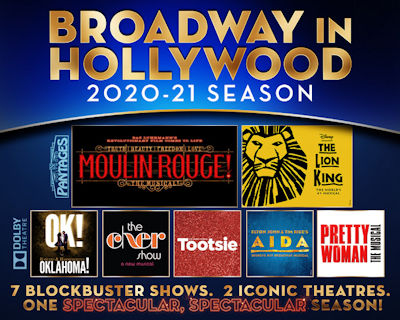

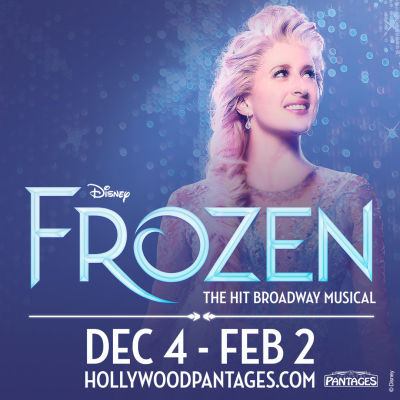

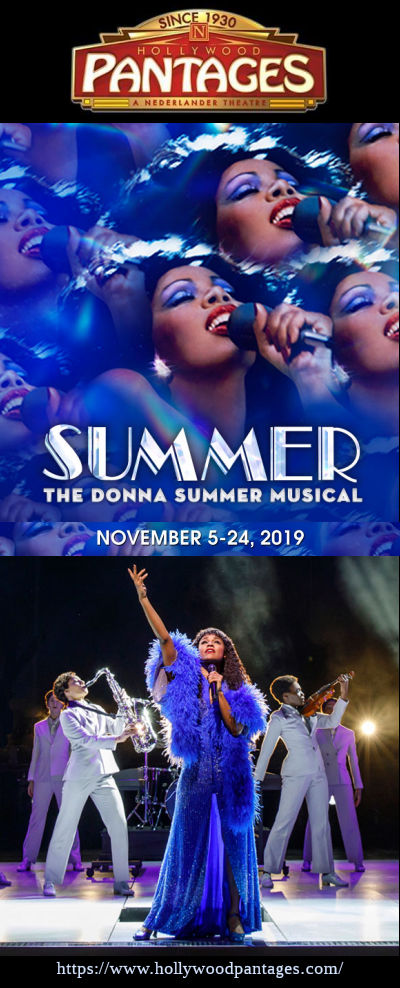



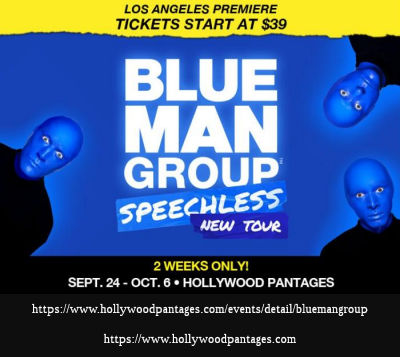



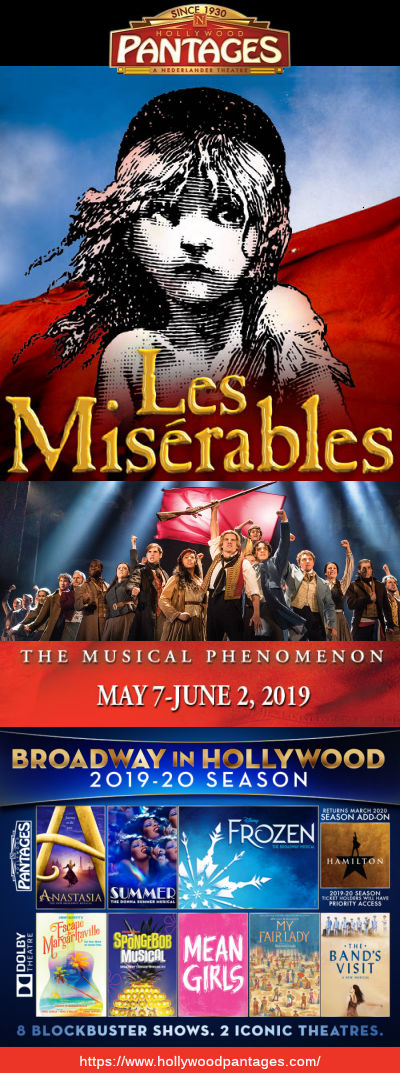

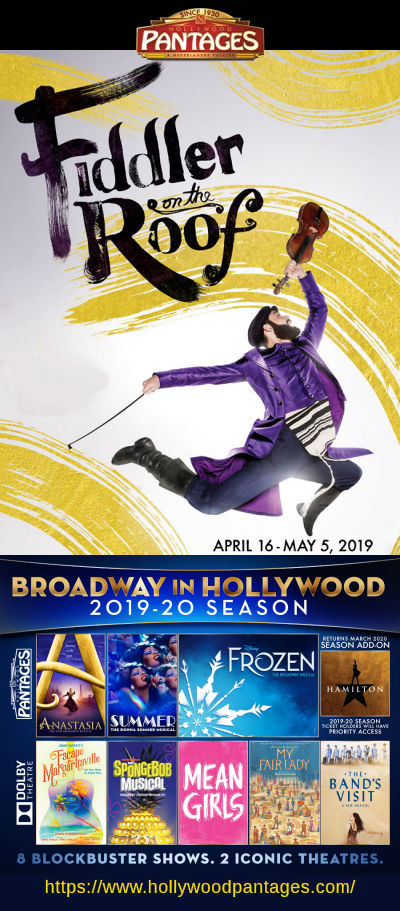



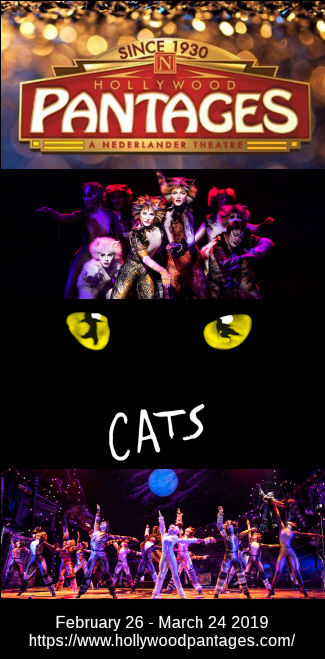

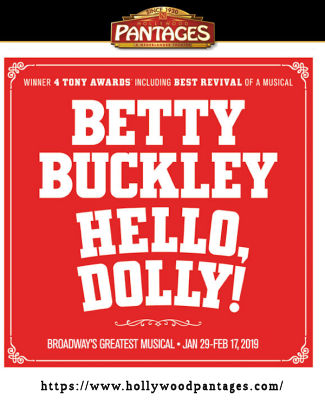

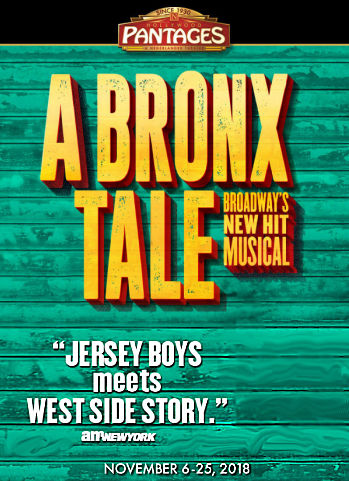



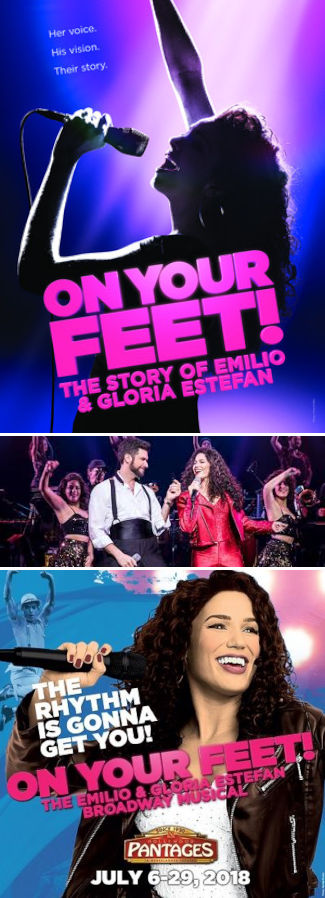

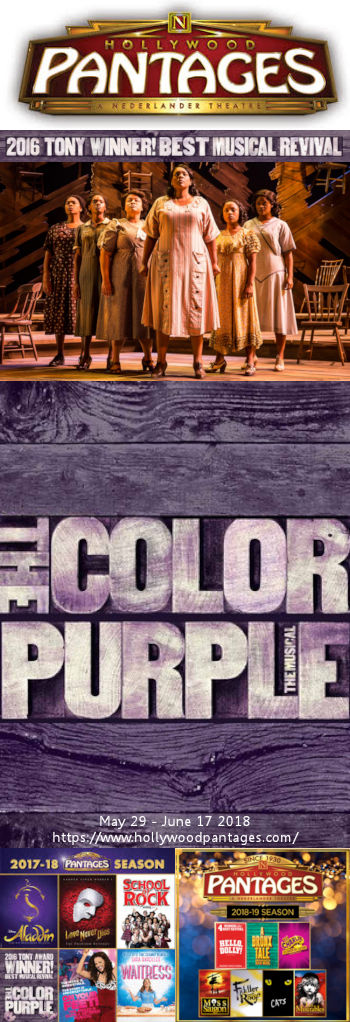




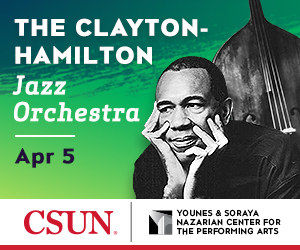
 Note: Two days before this, we saw the
Note: Two days before this, we saw the 
 This morning, the
This morning, the  So, what did the Pantages announce? You can see their graphic to the right. Here are my thoughts on the shows:
So, what did the Pantages announce? You can see their graphic to the right. Here are my thoughts on the shows:

 Ah, the new
Ah, the new 